

1 (336) 871-2334

5086 NC HWY 704 Sandy Ridge,NC.

Effective Through Teamwork

Welcome to the Official Website for the Northeast Stokes Fire & Rescue, Sandy Ridge, North Carolina
The firefighters proudly serve the citizens of the Northeast Stokes fire district









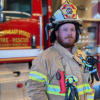
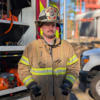
ALL CONTENT, INCLUDING ALL IMAGES AND PHOTOGRAPHY
EXCEPT AS SPECIFICALLY NOTED, IS PROPERTY OF
NORTHEAST STOKES VOLUNTEER FIRE & RESCUE.
CONTENT PROUDLY MAINTAINED BY A VOLUNTEER
Contact Information
To Contact Chief Clark, Click link below to Email. To contact ASST. Chief Webb, Click link below to Email. To Contact the Firehouse, Click link below to






















Winter can bring arctic blasts, snowstorms, ice and sleet. And more often these days, areas of the country
unaccustomed to that type of severe weather are experiencing just that.During those weather events, many may
lose power, and therefore heat, which can lead to medical emergencies such as frostbite and hypothermia. Older
people are especially vulnerable when temperatures drop because they have less efficient circulation. They may
have medical conditions (such as thyroid problems or diabetes) and take medications (such as beta-blockers)
that can raise their risk of health problems, including injuries, in the cold, says Matthew Levy, associate
professor of emergency medicine at the Johns Hopkins University School of Medicine. “Bone density decreases,
which could put someone at risk for injuries from falls, and blood pressure medicine may not allow your heart
rate to increase as needed,” when shoveling snow.
How to protect yourself in frigid temperatures
this winter season
Medical Emergencies Caused by Cold Hypothermia:
This occurs when one’s body temperature, normally around 98.6 degrees Fahrenheit, sinks below 95 degrees — a
medical emergency that can cause cardiac arrest and death, as the cold causes arteries and blood vessels to narrow,
which limits the amount of oxygen flowing to the heart. The temperature doesn’t need to be below freezing to cause
this condition, but just cold enough to lower body heat by a few degrees. Warning signs include shivering,
confusion, shallow breathing and drowsiness.
How to treat it: Call an ambulance immediately. While you wait, keep the person warm and dry, using blankets
or anything you have on hand. If the person is able to drink, give him or her a warm beverage without alcohol.
Frostbite: As blood flow is focused away from fingers and toes to keep up core body temperature, the extremities
suffer — fingers, toes, nose and ears. The skin starts to tingle (an early stage called frostnip), then feel numb, and
may look grayish or white. In extreme cases, it can turn black, as skin dies. Because frostbite begins with numbness,
Factora says, it’s a good idea to check your fingers and toes when you are able to do so safely. It can become
excruciatingly painful.
How to treat it: Warm water immersion is a standard treatment. If the skin is waxy and pale, however, “you
want to avoid partially rewarming and having it refreeze,” Levy says. If possible, first get the person where he or
she can stay warm.
How to protect yourself in frigid temperatures
Pile on the layers. If you have no heat in your home, gather all blankets, coats, sleeping bags — anything that
will allow you to maintain your body temperature — and bundle up. If your car is in a garage and you can’t open
the garage door, don’t run the vehicle’s heater to get warm or charge devices.
Keep the weather outside: Do anything you can to maintain the temperature indoors if you don’t have a heat
source (or even if you do). The National Institute on Aging suggests that you keep blinds and curtains closed and
roll towels and place them under doors to keep out drafts. Close the doors to unused rooms and avoid opening doors
to the outside unless absolutely necessary.
Take care with electric heaters and generators: When using a portable electric heater, follow safety
tips from the Consumer Products Safety Commission to avoid fire. They include advice about making sure the
device is not damaged in any way (is the cord hot when you plug it in?) and not leaving it unattended. Make sure
the heater is at least 3 feet away from curtains or bedding.Never use a gas-powered generator indoors; you can be
poisoned by the colorless, odorless by-product: carbon monoxide. The American Red Cross has tips on preventing
carbon monoxide poisoning.
Never use gas-powered generator indoors: you can be poisoned by the colorless, odorless by-product
carbon monoxide. The American Red Cross has tips on preventing carbon monoxide poisoning.
Avoid alcohol: Alcohol can make you feel warmer, but it actually lowers the body’s temperature because it causes blood to flow from your core to
your extremities. Too much alcohol will impair your judgment — not something you want in a weather emergency.
Don’t drink melted snow: If you don’t have water, try to avoid drinking melted snow, which can be full of impurities. “I would advise against
drinking it unless there’s truly no other option,” Levy says. (It’s less risky if you boil it before drinking.)
Dress right: Multiple thin layers can insulate you better than one thick layer. The Centers for Disease Control and Prevention suggests wearing an
inner layer of wool, silk or polypropylene, which will hold more body heat than cotton. If you start to get too warm, take off a layer before you
begin to sweat. (Sweat lowers your body temperature.) Mittens are warmer than gloves.
Be careful while clearing snow: Extreme exertion, such as shoveling, can lead to a heart attack “People who aren’t normally used to doing
such strenuous exercise should not shovel unless they literally have a clean bill of health from their doctor,” Levy says. Note that every winter
brings distressing snowblower injuries. You can’t be too careful when using one.
Find a shelter. If you’re unable to get warm at home or you’re far from home, go to a shelter or warming center if there is one nearby and you
can get there safely.
Keep yout pets safe: Animals should be inside, but remember that they can get cold — and hypothermia and frostbite — too. Keep them dry and
warm using blankets and hot-water bottles if they seem dangerously cold. If you walk your dog outdoors, try to avoid areas that have been salted; the
Humane Society of the United States warns that canines are at risk for salt poisoning because they often lick their paws after a walk.
Check on others: When temperatures are extremely cold, check on more vulnerable family members and neighbors. Even if they're indoors,
they may be at risk.

Family Safety Tips:




Effective Through Teamwork
5086 NC HWY 704 Sandy Ridge,NC.

Welcome to the Official Website for the
Northeast Stokes Fire & Rescue, Sandy Ridge, NC
The firefighters proudly serve the
citizens of the Northeast Stokes fire district

1 (336) 871-2334





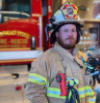

Contact Information
To Contact Chief Clark, Click link below to Email. To contact ASST. Chief Webb, Click link below to Email. To Contact the Firehouse, Click link below to Email.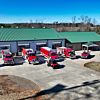
ALL CONTENT, INCLUDING ALL IMAGES AND PHOTOGRAPHY
EXCEPT AS SPECIFICALLY NOTED, IS PROPERTY OF
NORTHEAST STOKES VOLUNTEER FIRE & RESCUE.
CONTENT PROUDLY MAINTAINED BY A VOLUNTEER





















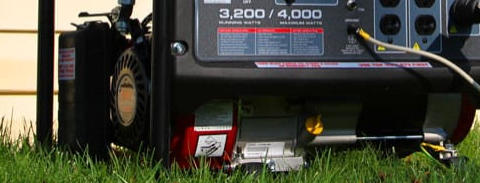
Winter can bring arctic blasts,
snowstorms, ice and sleet. And more
often these days, areas of the
country unaccustomed to that type
of severe weather are experiencing
just that.
During those weather events, many
may lose power, and therefore heat,
which can lead to medical
emergencies such as frostbite and
hypothermia.
Older people are especially
vulnerable when temperatures drop
because they have less efficient
circulation. They may have medical
conditions (such as thyroid problems
or diabetes) and take medications
(such as beta-blockers) that can raise
their risk of health problems,
including injuries, in the cold, says
Matthew Levy, associate
professor of emergency medicine at
the Johns Hopkins University
School of Medicine. “Bone density
decreases, which could put someone
at risk for injuries from falls, and
blood pressure medicine may not
allow your heart rate to increase as
needed,” when shoveling snow.
How to protect yourself in
frigid temperatures
this winter season
Medical Emergencies
Caused by Cold
Hypothermia:
This occurs when one’s body
temperature, normally around
98.6 degrees Fahrenheit, sinks
below 95 degrees — a medical
emergency that can cause
cardiac arrest and death, as the
cold causes arteries and blood
vessels to narrow, which limits
the amount of oxygen flowing
to the heart. The temperature
doesn’t need to be below
freezing to cause this condition,
but just cold enough to lower
body heat by a few degrees.
Warning signs include
shivering, confusion, shallow
breathing and drowsiness.
How to treat it: Call an
ambulance immediately. While
you wait, keep the person warm
and dry, using blankets or
anything you have on hand.
If the person is able to drink,
give him or her a warm
beverage without alcohol.
Frostbite: As blood flow is focused away from
fingers and toes to keep up core body temperature, th
extremities suffer — fingers, toes, nose and ears.The
skin starts to tingle (an early stage called frostnip),
then feel numb, and may look grayish or white. In
extreme cases, it can turn black, as skin dies. Because
frostbite begins with numbness, Factora says, it’s a
good idea to check your fingers and toes when you
are able to do so safely. It can become excruciatingly
painful.
How to treat it: Warm water immersion is a
standard treatment. If the skin is waxy and pale,
however, “you want to avoid partially rewarming and
having it refreeze,” Levy says. If possible, first get
the person where he or she can stay warm.
How to protect yourself in frigid
temperatures
Pile on the layers. If you have no heat in your
home, gather all blankets, coats, sleeping bags —
anything that will allow you to maintain your body
temperature — and bundle up. If your car is in a
garage and you can’t open the garage door, don’t
run the vehicle’s heater to get warm or charge devices.
Keep the weather outside: Do anything you
can to maintain the temperature indoors if you don’t
have a heat source (or even if you do). The National
Institute on Aging suggests that you keep blinds and
curtains closed and roll towels and place them under
doors to keep out drafts. Close the doors to unused
rooms and avoid opening doors to the outside unless
absolutely necessary.
Take care with electric heaters and
generators:When using a portable electric heater,
follow safety tips from the Consumer Products Safety
Commission to avoid fire. They include advice about
making sure the device is not damaged in any way
(is the cord hot when you plug it in?) and not leaving
it unattended. Make sure the heater is at least 3 feet
away from curtains or bedding.Never use a
gas-powered generator indoors; you can be poisoned
by the colorless, odorless by-product: carbon
monoxide. The American Red Cross has tips on
preventing carbon monoxide poisoning.
Never use gas-powered generator indoors:
you can be poisoned by the colorless, odorless by
product: carbon monoxide. The American Red Cross
has tips on preventing carbon monoxide poisoning.
Avoid alcohol: Alcohol can make you feel
warmer, but it actually lowers the body’s temperature
because it causes blood to flow from your core to
your extremities. Too much alcohol will impair your
judgment — not something you want in a weather
emergency.
Don’t drink melted snow: If you don’t have
water, try to avoid drinking melted snow, which can
be full of impurities. “I would advise against drinking
it unless there’s truly no other option,” Levy says.
(It’s less risky if you boil it before drinking.)
Dress right: Multiple thin layers can insulate you
better than one thick layer. The Centers for Disease
Control and Prevention suggests wearing an inner
layer of wool, silk or polypropylene, which will hold
more body heat than cotton. If you start to get too
warm, take off a layer before you begin to sweat.
(Sweat lowers your body temperature.) Mittens are
warmer than gloves.
Be careful while clearing snow: Extreme
exertion, such as shoveling, can lead to a heart attack
“People who aren’t normally used to doing such
strenuous exercise should not shovel unless they
literally have a clean bill of health from their doctor,”
Levy says. Note that every winter brings distressing
snowblower injuries. You can’t be too careful when
using one.
Find a shelter: If you’re unable to get warm at
home or you’re far from home, go to a shelter or
warming center if there is one nearby and you can get
there safely
Keep yout pets safe:Animals should be inside,
but remember that they can get cold — and
hypothermia and frostbite — too. Keep them dry and
warm using blankets and hot-water bottles if they
seem dangerously cold. If you walk your dog
outdoors, try to avoid areas that have been salted; the
Humane Society of the United States warns that
canines are at risk for salt poisoning because they
often lick their paws after a walk
Check on others: When temperatures are
extremely cold, check on more vulnerable family
members and neighbors. Even if they're indoors,
they may be at risk.


Family
Safety Tips:


























































































